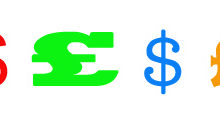A VALUABLE TOOL
The term ‘elevator pitch’ comes from an imagined scenario where the sales person gets into a lift, or ‘elevator’ in the States, and finds that they are alone with a very important prospect. They have a sudden unexpected occasion to sell. The prospect is trapped, but only for a very short time before the lift door opens and offers a chance for escape. So the sales person should have ready, a succinct short sales pitch that does the job. Usually it would be a 30 seconds to one minute opportunity.

More realistically, it might be a casual brief meeting, or a question which provides the opportunity to use an elevator pitch. ‘What do you do for a living?”, or “ What are you doing here today?” for instance. The elevator pitch is an ice-breaker, that opens up the opportunity to develop into some more in depth dialogue.
As an artist, your pitch can spark an interest in what you do, or in a project, idea, or product.
It should be interesting, memorable, and succinct while conveying important information. It also needs to explain what makes you – or your product, or idea – unique.
But Even More Important Is…
The value of an elevator sales pitch is not just as preparation for the unlikely elevator event. Another really important value comes from the process of preparation for such a situation. The self-examination and focus needed to create a concentrated summary of the benefits of your product or service is what is crucial.
‘Self-Examination’ And ‘Focus’.
Some artists seem to find self-examination quite difficult. Maybe that is because art is so difficult to define. Artists make art, but what is art? And why do we make it?
30 to 60 seconds is not enough time to even start searching for or communicating an answer.
So being able to distill what you do into one simple sentence is incredibly valuable. It helps you as an artist entrepreneur, focus on exactly what you do and who you’re doing it for. Which in turn can help you clearly market your business.
Bonus Time
Another benefit of the focused self examination and preparation of an elevator pitch is that you can adapt it for other uses elsewhere. For instance a simple headline at the top of your website, exhibition catalogue, or sales brochures will communicate the core essence of you and your art business and generate interest. My postcard handout is an example of this.
Here it is
Here is my elevator pitch. I can use it at the same time that I hand out my illustrated postcard.
‘Hello, my name is Colin Ruffell. I am a full-time professional artist. I’ve been doing this for over 50 years. I paint pictures, make and publish fine-art print editions, and greetings cards of my images. This postcard shows some and it has links to my websites. You can see that I paint cityscapes nowadays, which are popular and successful all over the world. Can I show you some more?’
That is roughly what I say. It might change a little depending on who the prospect is. I prepared, wrote down, and rehearsed mine ages ago.


Google Says
To craft a great pitch, follow these steps.
- Identify your goal.
- Explain what you do.
- Communicate your USP.
- Engage with a question.
- Put it all together.
The elevator pitch is a chance to establish authority.
It needs a call to action.
Try to keep a business card or other take-away item with you, which helps the other person remember you and your message. And cut out any information that doesn’t absolutely need to be there.
In Conclusion.
It really is worth taking the time to prepare your own unique elevator pitch. After all it does several important things.
One. It helps prepare for possible unlikely events in lifts.
Two. It stimulates self-examination.
Three. It provides prepared answers for more common meetings with potential new collectors.
Four. It helps create succinct wording for cards and hand-outs.
Five. It avoids that horrible regret feeling that will surely come if you don’t have one.




